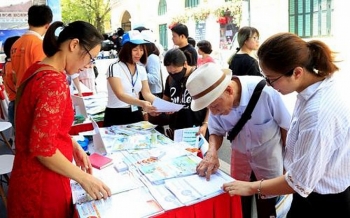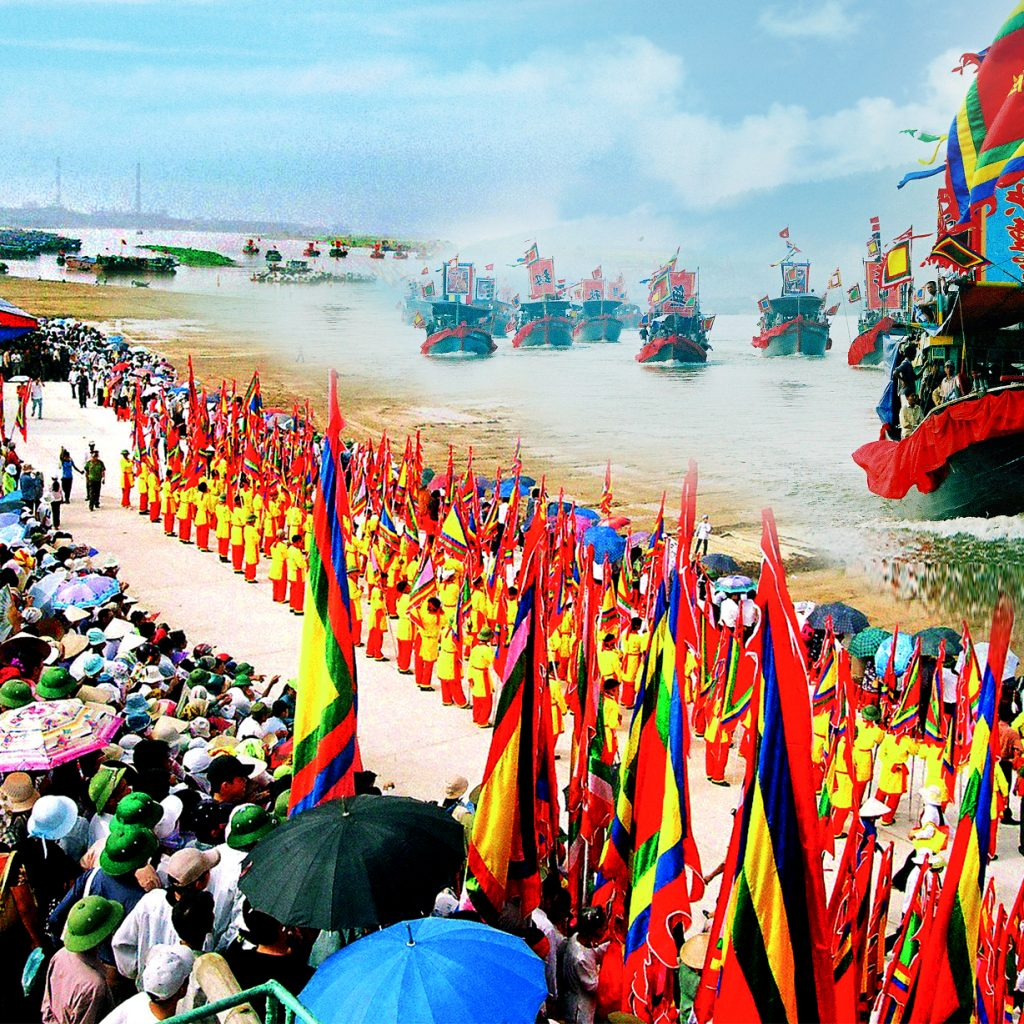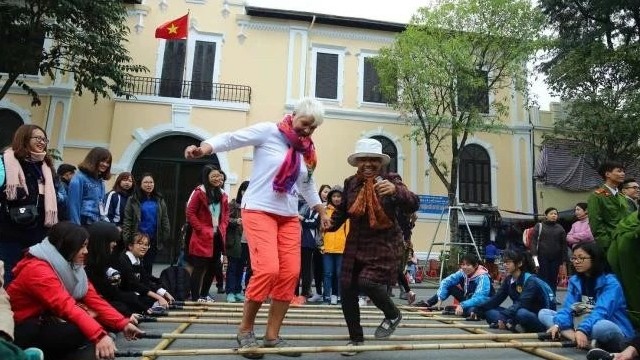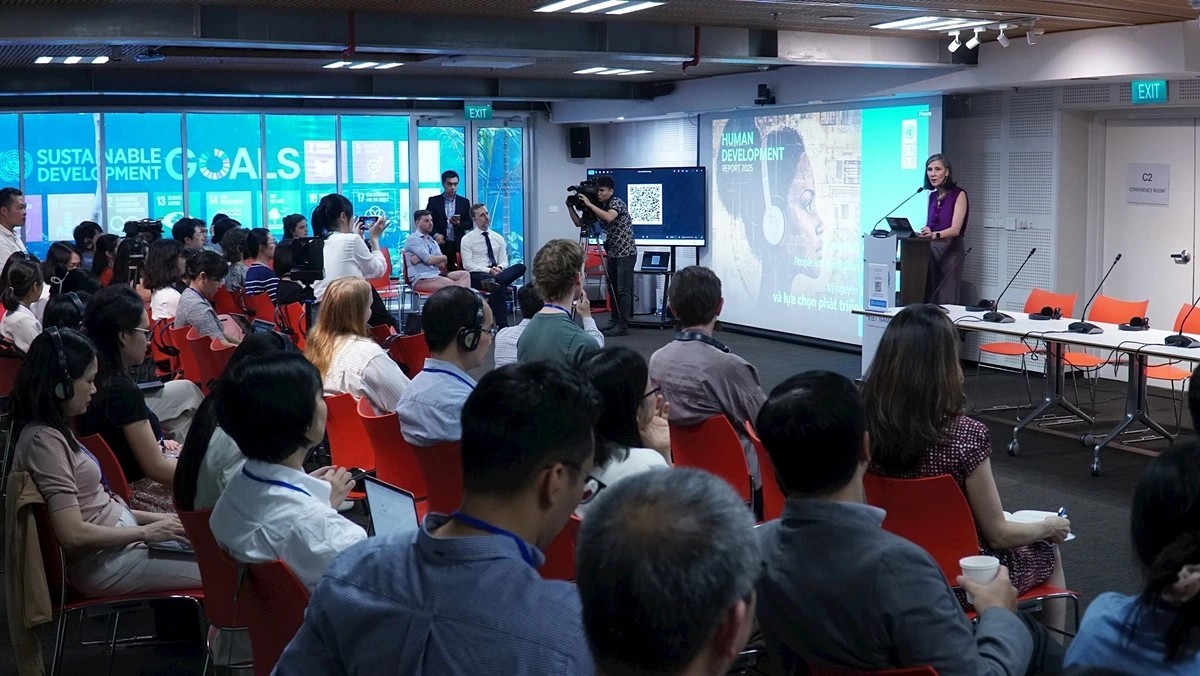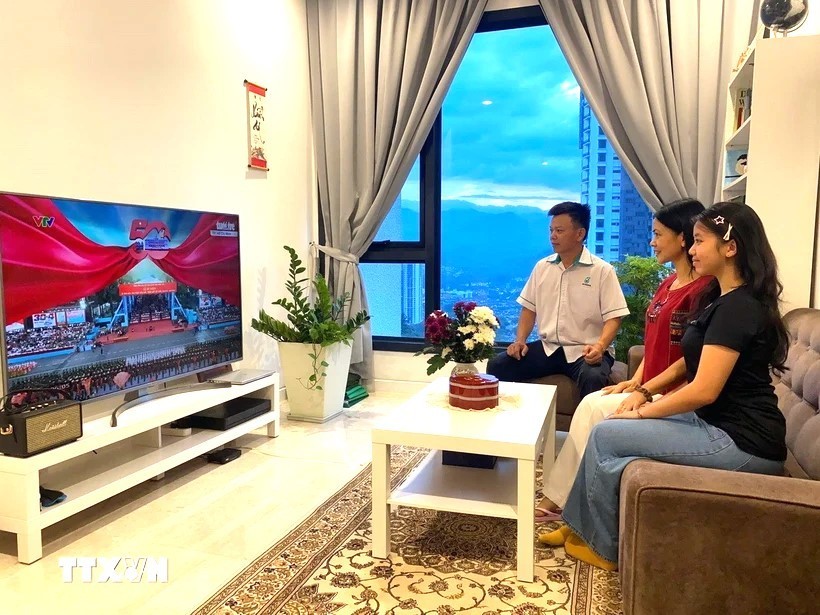Qing-ming Festival in Vietnam: When, Why and How it is celebrated?
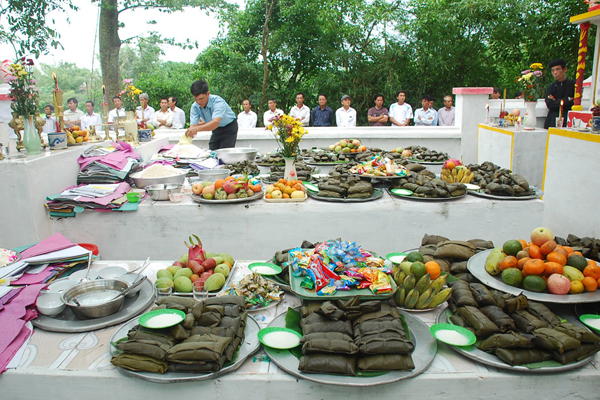 |
| Photo: Viet Vision Travel |
When is Quing-Ming Festival in Vietnam
In Vietnam, Qingming Festival is on month 3 day 3 of the lunar calendar. Vietnamese people have similar traditions as in China: tomb sweeping, spring outings, cold food, etc. Unlike in China, it is not a public holiday. During this celebration, people visit the dead. The graves of family and friends are cleaned and decorated to celebrate the arrival of spring with them. Takes place on the 5th day of the third lunar month of the year (March / April). This celebration is more family-oriented and lasts several days.
Qingming Festival is also called Tangyuan Festival. Vietnamese glutinous rice balls are filled with mung beans. They are cooked and placed in a bowl and mixed with sugar and water for consumption. In the past, Vietnamese would never eat Tangyuan before the third day of March. Because in Vietnam, with respect to the gods and ancestors, no food is allowed to be eaten before offering.
The history of Qing-Ming
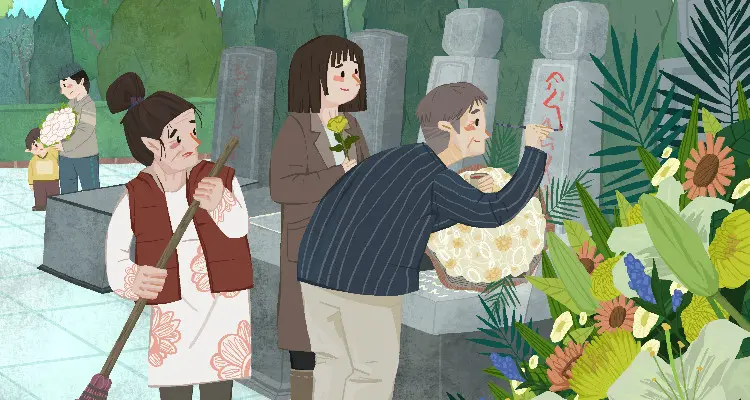 |
| Photo: China Highlights |
The Qingming Festival started in the Zhou Dynasty (1046–221 BC) and has a history of over 2,500 years.
It originated from the extravagant and ostentatiously expensive ceremonies that many ancient emperors and wealthy officials held in honor of their ancestors. They offered sacrifices to their ancestors and beseeched them to bless the country with prosperity, peace, and good harvests.
In the year 732, Emperor Xuanzong of the Tang Dynasty declared that respect could only be paid formally at ancestors' graves on the first day of the Qingming solar term. From then on, sweeping tombs on the first of Qingming gradually became popular with both royal and common families, and the tradition has lasted well over a millennium.
There is a legend about the origin of the Qingming Festival relating to a mountain near Pingyao Ancient Town called Mianshan.
Mianshan is also called Jieshan (‘Jie Mountain’) after Jie Zitui (?–636 BC), a loyal defender of Duke Wen of Jin (697–628 BC), who, earlier in life, was a prince in exile named Chong'er.
One day in 655 BC, when Prince Chong'er was about to starve to death, Jie Zitui secretly cut a piece of flesh from his thigh and cooked it into a meat soup, which saved the prince. Chong'er wondered where Jie had obtained the soup. When he found out what Jie had done, the prince was so moved that he promised to reward him one day.
Nineteen years later, in 636 BC, Prince Chong'er returned to his kingdom and took power as Duke Wen of Jin, one of the five hegemons of the Spring and Autumn Period (770–476 BC).
After taking power, Duke Wen greatly rewarded and honored all of his followers, but he forgot Jie Zitui, the man who once saved his life. When others spoke of Jie Zitui, Duke Wen remembered him and was ashamed.
Then, the duke decided to visit Jie Zitui personally and confer a title on him. Jie Zitui heard the news and hid on a nearby mountain with his aged mother. He refused to meet the prince because he didn’t want to be an officer. No one could find him. Duke Wen set fire to the mountain to force Jie Zitui out of hiding.
Three days later, the duke and his people found two dead bodies — those of Jie Zitui and his mother — in a cave under a willow tree on the mountain. In honor of Jie Zitui, a man who never sought fame and profit, Duke Wen buried him and his mother respectfully, held a memorial ceremony for the tomb, and ordered his subjects not to use fire and only to eat cold food on that day.
The next year, Duke Wen climbed the mountain to commemorate Jie Zitui. When arriving at the tomb, he saw the burnt willow tree was revived with lush leaves and branches. He was so moved that he swept the tomb and declared the festival as a “Cold Food Festival” (part of the Qingming Festival nowadays).
Duke Wen formed an honest, diligent, pragmatic, and efficient government during his reign, and so his Qingming cold food tradition lived on with his legend.
How is Qing-Ming Festival celebrated in Vietnam?
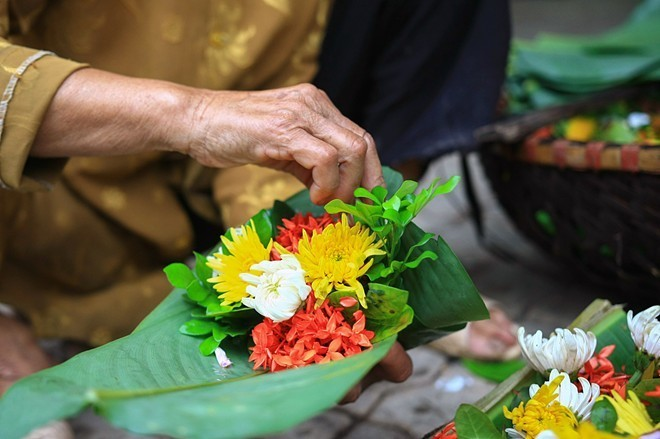 |
| Photo: Vietnamnet |
During this celebration, people visit the dead. The graves of family and friends are cleaned and decorated to celebrate the arrival of spring with them. Takes place on the 5th day of the third lunar month of the year (March / April). This celebration is more family-oriented and lasts several days.
Clean the ancestors’ graves (Tao Mo)
In Vietnamese culture, Tao mo is a custom to show respect and gratitude towards ancestors. In this day, family members, no matter where they live, all come back home and gather together to go cleaning the graves, then eat a warm meal together. The graves are cleaned properly, and repaired with care and respect of the living for the dead. In Vietnamese culture, death is not the end; instead the soul will still remain and wait to be reborn in an afterlife. Afterward, family members will burn incense and also offer some kinds of food for the deceased in the meaning of welcoming them back to celebrate New Year with their descendants.
 |
| Photo: aFamily |
Eating cold food
Glutinous rice balls is traditional cuisine in Cold Food Festival (March 3 in lunar month). The balls are served in a thick, sweet clear or brown liquid made of water, sugar, and grated ginger root. It is generally warmed before eating and garnished with sesame seeds.
There are 2 type of Glutinous rice balls: banh troi and banh chay. Banh troi is in size of a grape and made of rice, with a palm sugar cube inside; banh chay is the size of an egg, with mung beans inside and is served with thick sweet sauce.
The custom of making glutinous rice balls has its roots in China, where it is celebrated from the third to fifth day of the fourth lunar month and is an occasion for the locals to honour a scholar named Zitui who died of fire burns. Tradditionally, fire is a taboo on this day, so locals eat cold food only.
The Vietnamese, however, celebrate only one day, March 3th in lunar month. In this day, glutinous rice balls are offered to anccestors as a sign of gratitude. Fire is not banned on this day, and in addition to glutinous rice balls, people still have normal meals.
Making this kind of cake is quite easy. With banh troi, prepare dough with a brown palm sugar cube inside and rolling it into small balls, then drop it into boiling water. Banh troi is ready when it floats to the surface, place it immediately to cold water, otherwise they will stick to each others. Finally, put the balls on a plate and sprinkle with seasame seeds on top. The recipe of making banh chay is similar to banh troi, but inside banh chay is mung beans, and banh chay is served with thick and sweet sauce that grated ginger and coconut fibre are added to the sauce. Though glutinous rice balls versions may vary from region to region, they all share ingredients in common: grean beans, sugar cubes and sticky rice.
Spring outing (Du xuan)
Spring is the perfect time for going out and sightseeing, spending time with your family, as the festival marks the beginning of the season when people spend more time outside since the weather warms up.
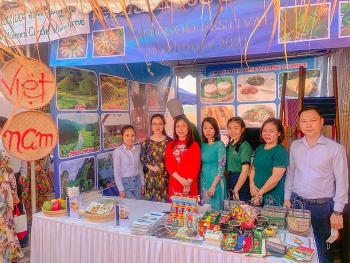 | Vietnam introduces diversity of traditional foods in Lao Food Festival The Lao Women's Union and the Lao Businesswomen’s Association jointly organized the Lao Food Festival 2021 at Chao Anouvong Park, Vientiane capital. Vietnamese cuisine was ... |
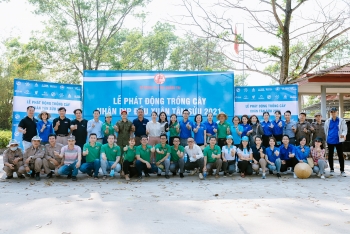 | NGOs participate in tree-planting festival in Quang Tri On February 26, at Kid First village, Dong Ha city, in response to the call of the Quang Tri Department of Foreign Affairs, non-governmental organisations ... |
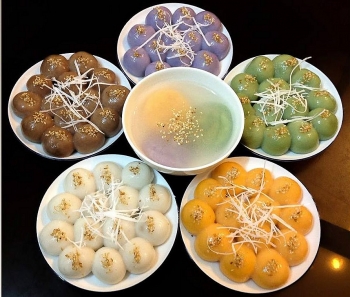 | Recipe Banh Troi nuoc (Vietnamese glutinous rice ball) - Cold Food Festival sweet desserts Whether you're a family with young kids or young adults, on Mar 3 (of lunar calendar) they are all making or buying Banh Troi and ... |
Recommended
 Handbook
Handbook
Vietnam Moves Up 8 Places In World Happiness Index
 Handbook
Handbook
Travelling Vietnam Through French Artist's Children Book
 Multimedia
Multimedia
Vietnamese Turmeric Fish among Best Asian Dishes: TasteAtlas
 Handbook
Handbook
From Lost to Found: German Tourist Thanks Vietnamese Police for Returning His Bag
Popular article
 Handbook
Handbook
Prediction and Resolution for the Disasters of Humanity
 Handbook
Handbook
16 French Films To Be Shown For Free During Tet Holiday In Vietnam
 Handbook
Handbook
Unique Cultural and Religious Activities to Welcome Year of the Snake
 Handbook
Handbook

